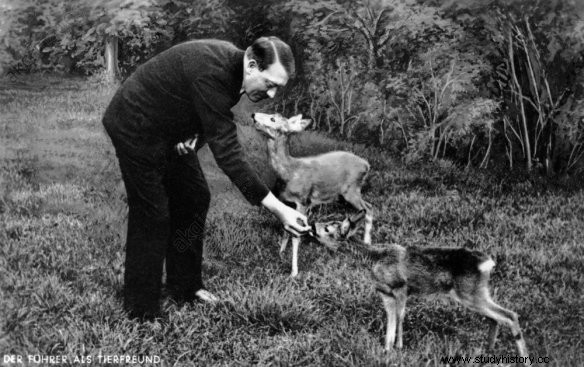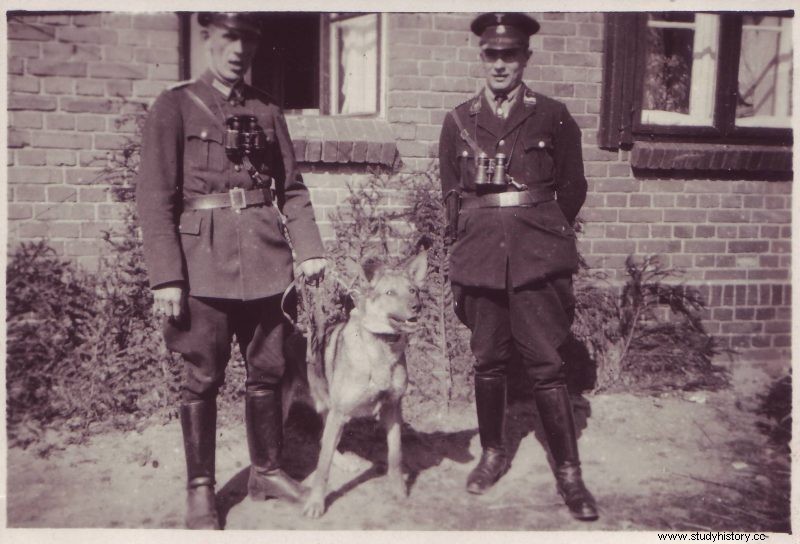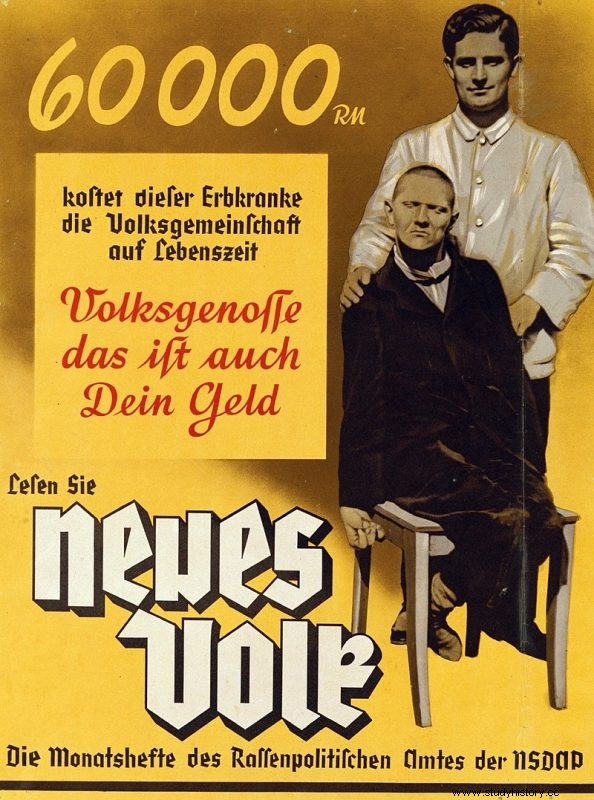In Nazi Germany, animals enjoyed a much better position than those outside the Volksgemeischaft , that is, that people who were not Aryans or were ideologically opposed to Nazism. A dog had more rights than a human being.
German idealism as the basis of Nazism
Since the 18th century, the Germanic territories of Europe have provided the world with a large number of renowned philosophers. Hegel, Heiderger or Kant are perhaps the best known names. Lacking a weighty history and above all, lacking a literature worth considering, the German philosophers and thinkers of the 18th and 19th centuries sought their reason for being in culture, customs, language and finally in the race.
The search for the natural origins of human qualities was mixed with popular myths. These relationships were based on feelings, on what seemed to be , and never what it really was. In this way belief was replacing scientific evidence. The idealization of animals as an example of the supreme values of nature falls within this game of ideas. Nazism limited itself to taking them to the last consequences.
Animal protection in Nazi Germany
Animalism is not a minor issue within the Nazi regime. The justification for their crimes and their ideology in Darwin's evolutionary theories and in what they saw in nature was always very present within their ideology.
Hitler obtained the post of chancellor of Germany on January 30, 1933. The total seizure of power in the country lasted only two months. By the end of March of that same year, the Nazis had total control of the country. This is the beginning moment of the open implantation of their new Aryan society and animals were one of the first subjects they were concerned with.
Just 80 days after his appointment as chancellor, Hitler passed the first animal protection law. A historical milestone, since it was the most advanced law in the world on this subject. The law was passed on April 21, 1933, the same day that the Dachau and Oranienburg concentration camps were opened. The animal protection law was so advanced that many of its articles were in force until the 1970s.
This law confers rights for the first time to animals. The laws stipulate that it is forbidden to uselessly make an animal suffer; force-baiting birds is prohibited; performing operations without anesthesia on animals of any kind is prohibited; abandoning a pet animal is prohibited; vivisection is prohibited, even for medical research.
Animals as propaganda
The protection of animals in Nazi Germany was obviously a matter of conviction, but this did not prevent it from being used as a propaganda weapon. One could frequently read the slogan "The Führer is the greatest protector of animals in the world." The Nazis believe in protecting animals, but they also know that their compatriots often love their dogs more than their children.
Selling the idea that the Nazi leaders are great animal lovers makes them seem like kind people and above all, people who can be trusted. Good people treat animals well. Only barbarians mistreat an animal. This idea was repeated over and over again and this is one of the reasons why you can see countless images of Nazi leaders accompanied by different types of animals. A person who feeds some fawns can't be bad.

The Jews are not absent from this animalist propaganda. Based on that German idealism that sustains Nazi nationalism, the propaganda relates the Aryan, the superior being, with nature, the countryside and life in harmony with the environment. The Jew appears as just the opposite. The Jew slaughters animals and mistreats them, especially with kosher sacrifices , which involves bleeding the animals before cutting them up. This practice will be described as showing their inferiority as humans and will also be prohibited in the 1933 laws.
The propaganda even reached the zoological gardens. The Berlin Zoo underwent a major renovation during Nazi Germany. In the 1930s, animals considered Germanic were placed in a prominent position in this zoo, referring to their superiority over others in the animal kingdom. The zookeepers thus became the maintainers of that German superiority. From May 1, 1933, they were given Nazi uniforms and paraded in party marches.
The German Shepherd, the reflection of German qualities
Although the German Shepherd is one of the most famous and popular breeds in the world, it is not a natural breed. The German Shepherd was created in 1899 by dog breeder Maximilian von Stephanitz. This breeder and fervent nationalist sought to create the perfect dog, a dog that also displayed the qualities of the German people:aggressiveness, strength, resistance and obedience.
The new breed soon became very popular, so much so that it was the dog of choice for the Nazi forces. In the concentration camps it was the most common dog. Even Hitler was always accompanied by his beloved dog Blondie , the most popular German Shepherd in Nazi Germany.

The importance of the dog in general was celebrated on Dog Day, an annual festival where dogs were honored and where the importance of this animal in Germanic culture was remembered.
German shepherds also played a very important role in the world war. South of Berlin, in the small town of Kummersdorf, a dog training school was established for the German armed forces. It is estimated that up to 200,000 dogs were trained there during the 12 years that the Nazi regime lasted.
Dogs in Nazi concentration camps
The dog with the greatest presence in the Nazi concentration camps was the German shepherd. Each camp had a kennel where they were raised and cared for. The patrols that kept watch behind the fences of the fields were always accompanied by one of these aggressive animals.
Despite the efficiency of German Shepherds, the SS tried to create a new breed for the fields. The goal was to create an animal with all the qualities of the German Shepherd, but more aggressive. For this, doberman crosses were made with German shepherds. Although some saw service, they were sometimes too uncontrollable that their breeding was discontinued.
The dogs were also trained to act especially in the fields. In some guidelines of September 1944, it is specified how the feeding of dogs in service should be so that they are even more aggressive. It is specified that daily rations must be strictly limited to 150 grams of dry feed. This caused great aggressiveness in the animals.

Nature as a justification for Nazism
Different political movements arose from Darwin's evolutionary theories that justified their beliefs in these theories. Basically they said that if in the animal world only the strongest survive and the weak are destroyed, among human societies this was also applicable.
The Nazis considered the German race to be a superior race, a strong race that had the right provided by nature to eliminate the weakest. This will justify world domination from the Nazi perspective, but it will also justify the elimination of the weakest elements of the own group.
When you think of mass eliminations in Nazi Germany, you automatically think of the Jewish people. However, the first people to be slaughtered for these ideas was the German people themselves. In 1939, Nazi Germany launched Operation T4, whose objective was the elimination of all those Germans who were considered defective from a racial point of view. Sanatoriums and insane asylums in Germany and Austria have since become places of mass executions by means of gas chambers and lethal injections. It is estimated that around 200,000 Germans were killed in this project.

